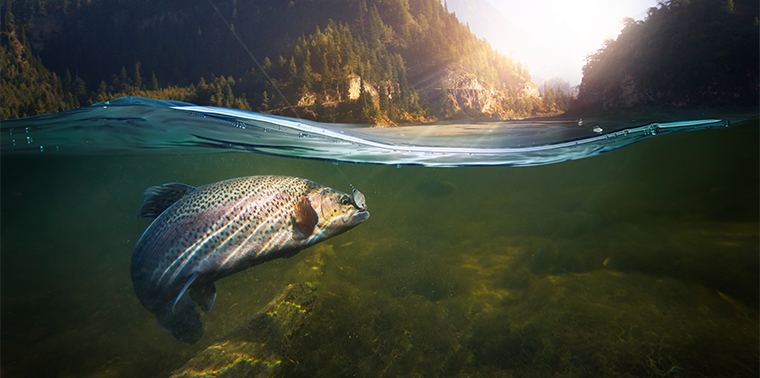July 15, 2016 — Inland fish play critical roles in North American ecosystems and economics: In the U.S. alone in 2011, freshwater anglers spent more than $30 billion on their hobby, generating $73 billion in economic output. And fish are important parts of healthy ecosystems, feeding on aquatic plants and animals and in turn providing sustenance to iconic species such as eagles, bears and osprey.
It’s no surprise, then, that as climate changes, 30 experts gathered last year in Bozeman, Montana, to explore implications for the well-being of North American fish populations.
Reporting earlier this month in a special issue of Fisheries magazine, the researchers summarized a range of actual and anticipated changes in North American inland fish identified by 31 previous studies. The changes relate to shifts not only in temperature but also in other climate-related environmental factors such as salinity, oxygen levels, and size and connectedness of water bodies.
Although they noted that it’s difficult to conclusively attribute changes to changing climate due to confounding factors — including other impacts of human activity — the researchers found indications that North American ecosystems are seeing alterations in distribution, timing of spawning, abundance, and growth of fish associated with changing climate. Coldwater species such as trout seem to be particularly affected.
Specific changes observed include a northward shift of smallmouth bass in Ontario; slower growth associated with increased temperature in Arctic char and cisco; and faster growth in species such as sockeye salmon and black bass. Some fish species are showing reduced ranges, while for others distribution is increasing. Predator-prey interactions appear to be changing, too, as population redistribution results in new mixes of species within waterways.
In addition to reporting on past observations, the scientists also used models to predict that anticipated increases in drought will bring more changes, stressing fish and so increasing mortality.
The researchers concluded by calling for further elucidation of how climate change will affect fish health and reproduction. They also encouraged fisheries managers to better document changes and develop systems for adapting management as circumstances change. The hope is that through activities such as identifying habitats protected from temperature fluctuations and using them as refuges, determining where assisted migration might be appropriate, and adapting regulations as needed, conservation workers can help ensure that fish, fisheries and fishing all continue to thrive in tomorrow’s warmer world. ![]()
Ensia shares solutions-focused stories free of charge through our online magazine and partner media. That means audiences around the world have ready access to stories that can — and do — help them shape a better future. If you value our work, please show your support today.
Yes, I'll support Ensia!
